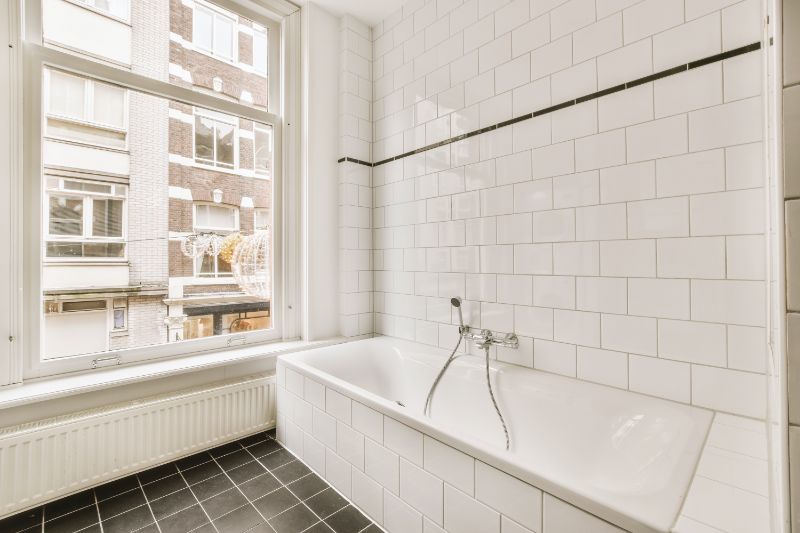Bathtub Refinishing San Diego
Are you tired of the worn-out, stained look of your bathtub? Has your once-beautiful bathroom lost its charm due to an old or damaged tub? Bathtub refinishing is a fast, affordable solution that can transform your bathroom without the high costs and hassles of a full replacement. At FG Tub & Tile, we specialize in bathtub refinishing, bringing new life to tubs in homes throughout the area. Whether you have a porcelain, fiberglass, or clawfoot tub, our refinishing services will make it look and feel like new, saving you both time and money.
In this comprehensive guide, we’ll answer all the questions you may have about bathtub refinishing, the refinishing process, and why this service is the best choice for your bathroom renovation needs. From cost considerations to the benefits of refinishing versus replacement, this guide will help you understand why bathtub refinishing is the ideal solution for giving your bathroom a fresh, updated appearance.

What Is Bathtub Refinishing?
The Basics of Bathtub Refinishing
Bathtub refinishing, also known as reglazing or resurfacing, is the process of restoring the surface of a worn or damaged bathtub to its original condition. Over time, bathtubs can become dull, stained, or chipped due to constant use, harsh cleaning products, or simply the passage of time. Instead of replacing your bathtub, which can be expensive and time-consuming, refinishing allows you to resurface the tub, giving it a new finish that looks as good as new.
How Does the Refinishing Process Work?
The refinishing process involves cleaning the tub’s surface, sanding it down to remove any imperfections, and applying a durable coating that restores its appearance. This method works on a variety of materials, including porcelain tubs, fiberglass, and cast iron. Our expert technicians at FG Tub & Tile follow a proprietary refinishing process to ensure a superior finish that lasts.
Why Choose Bathtub Refinishing Over Replacement?
The Benefits of Refinishing Over Replacing Your Bathtub
When considering a bathroom renovation, many homeowners immediately think of replacing their bathtub. However, refinishing offers several key advantages over a full replacement:
Cost-Effective Solution
The cost of replacing a bathtub can easily run into thousands of dollars when you factor in removal, plumbing, and installation. On the other hand, bathtub refinishing is a fraction of the cost, making it an affordable option for most homeowners.
Save Time and Hassle
Replacing a bathtub involves extensive labor, from removing the old tub to installing the new one, which can take days or even weeks. In contrast, our bathtub refinishing process is fast and efficient, often completed within 24 hours, allowing you to use your bathroom again without delay.
Environmentally Friendly
By choosing to refinish rather than replace, you reduce waste by keeping your existing tub out of the landfill. Refinishing uses fewer resources and materials, making it an eco-friendly option.
Customizable Options
When you refinish your tub, you have the option to change its color and appearance. Whether you want to match your bathroom’s decor or give it a completely new look, FG Tub & Tile offers a range of color and finish options to suit your style.
How Much Does Bathtub Refinishing Cost?
Understanding the Cost of Bathtub Refinishing
One of the most common questions we hear from potential clients is, “How much does bathtub refinishing cost?” The answer depends on several factors, including the condition of your tub, its material, and the size of the job.
Factors That Impact Cost:
- Material of the Tub: Whether your bathtub is made of porcelain, fiberglass, or cast iron can affect the cost of refinishing.
- Condition of the Surface: Tubs with deep scratches, chips, or cracks may require additional preparation before refinishing, which can add to the expense.
- Location: Your geographical location and proximity to a refinishing provider can also influence the overall cost.
- Special Requests: If you opt for custom colors or other enhancements, this could increase the price slightly.
On average, bathtub refinishing costs between $300 and $600, a fraction of what it would cost to replace a tub.
The Refinishing Process: What to Expect
Step-by-Step Bathtub Refinishing Process
At FG Tub & Tile, we follow a proven step-by-step process to ensure that every bathtub refinishing job meets the highest standards of quality and durability.
Step 1: Initial Inspection
We begin by thoroughly inspecting your bathtub to assess its current condition. This allows us to determine the best refinishing method and materials to use.
Step 2: Surface Preparation
Next, we clean the bathtub’s surface to remove soap scum, grime, and any old coatings. We then sand down the tub to create a smooth surface, ready for refinishing.
Step 3: Application of Primer and Coating
After preparing the surface, we apply a primer followed by a high-quality coating that restores the tub’s finish. Our proprietary coating is both durable and attractive, providing a like-new appearance.
Step 4: Curing Time
The tub is left to cure for several hours, allowing the new finish to harden and set. Most refinishing jobs are completed within 24 hours, so you can enjoy your revitalized tub quickly.
Step 5: Final Inspection and Approval
Once the refinishing is complete, we conduct a final inspection to ensure the job meets our high standards. You’ll have a beautiful and durable bathtub that looks and feels like new.

Is Bathtub Refinishing Right for You?
When to Consider Refinishing Your Bathtub
If your bathtub is in good structural condition but has surface issues like stains, chips, or discoloration, refinishing is an excellent option. However, if your tub is cracked or severely damaged, replacement may be necessary. At FG Tub & Tile, we can assess your tub and recommend the best solution based on its current state.
Signs You Need Refinishing:
- Visible stains that can’t be cleaned
- Chips, scratches, or surface damage
- Faded or dull finish
- Outdated color that no longer suits your bathroom’s design
How Long Does a Refinished Bathtub Last?
Durability of a Refinished Bathtub
A properly refinished bathtub can last up to 10-15 years with proper care. At FG Tub & Tile, we use high-quality materials and advanced techniques to ensure that your refinishing job will stand the test of time.
Ready to Give Your Bathroom a Makeover? Contact Us Today!
If you’re ready to give your bathroom a new look with bathtub refinishing, we’re here to help. FG Tub & Tile offers professional refinishing services that deliver long-lasting, high-quality results. Contact us today to schedule a consultation and learn more about how we can restore your tub to its original beauty.
